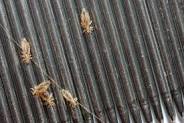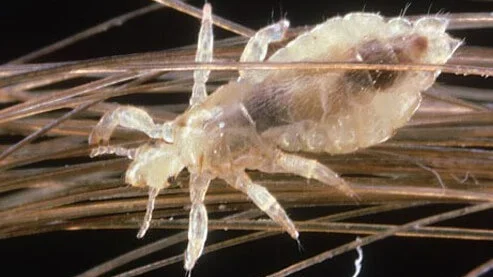My sister often told a story she couldn’t shake off her mind because of how it impacted her growing years. The story goes thus:
”I had this junior colleague back in Secondary School. She was fondly called Ada by her parents, a nickname for the first daughter of a family where we come from. Well, we all stuck with that name.
She had very beautiful hair. Everyone admired her hair because of how long and soft it was. And she loved flaunting it. Did people compliment her? You couldn’t blame us for being a little jealous, either.
As boarding students, every Saturday morning, we had a school hairdresser come around to do our hair.
As usual, she came around that weekend but while making a student’s hair, she noticed some nits on her scalp. On closer observation, she saw some lice in her hair. She advised her to get it treated as soon as possible.
It didn’t take up to one week, some other roommates of this said student started complaining of an itchy scalp and stuff crawling on the neck, Ada inclusive.
Most of them had to cut their hair to properly treat the lice but Ada was adamant. She was not going to lose her precious hair!
She resorted to other options that didn’t involve cutting her hair. She used various hair creams and treatments but it couldn’t kill off the nits (eggs of the Insect). As this carried on for months the symptoms got worse.
You know how it is in school. Everyone avoided her like a plague so as to not get infected as well.
One fateful Tuesday, as I remember vividly, Ada was rushed out of the school in an Ambulance. She had fainted during one of her classes. The news came back that she had Anaemia. Is that not another disease?
These head lice can’t be that serious, someone commented, Can it?”
HISTORY AND CAUSES
Pediculosis is an infestation of lice. It may properly refer to lice infestation of any part of the body. The term is sometimes used loosely to refer to pediculosis capitis, the infestation of the human head with the specific head louse.
Pediculosis can be classified into 3 groups.
- The head lice infestation
- The body louse infestation, also known as Vagabond disease.
- Pubic louse infestation, also known as phthiriasis

Head louse are wingless insects that spend their entire lives on the human scalp and feed exclusively on human blood. Humans are the only known hosts of this specific parasite.
They feed on blood from the scalp and lay eggs called nits that are firmly attached to the hair exposed at the skin’s surface.
Head lice have been around for a long time. Genetic studies suggest that lice developed about 1.68 million years before homo sapiens emerged and that they started their relationships with humans about the same time human evolution separated from chimpanzee evolution. The oldest physical evidence of head lice on a human was a nit found on the hair of a 10,000-year-old body at an archaeological site in Brazil. In China, documents from 1200 B.C. indicate they used mercury and arsenic compounds to drive away head lice. It didn’t work. By 450 B.C, Egyptians recommended shaving the entire body to eradicate lice, which, while effective, has proved impractical in the succeeding centuries.
Hair lice can affect anyone but occur mostly among Children because they play and share combs and hats and other objects that touch their hair with other school-age children.
As earlier mentioned in the case of Ada, leaving hair lice untreated can be severe. It takes about 7-10 days for eggs to hatch. The head lice take 9 to 12 days to become fully grown adults. At that stage, they can then mate, and they lay their first eggs 24 hours after mating. The female, adult louse only needs to mate once and after that, she lays up to 10 eggs a day for the 30 days of her lifetime, so she lays 300 eggs in total and these insects live off the blood of their hosts. There are symptoms that show when a person has been infected with this head louse. Such as
- The tickling feeling of something moving in the hair
- Itching
- Sores from itching and scratches
- Difficulty sleeping (Head lice are most active at night).
Head lice can be gotten from person to person by direct contact or by sharing items with an infected person.
Head lice can’t fly or jump from person to person but although rare, they can spread through personal items like bedsheets, hats, hairbrushes and combs.
DIAGNOSIS
Head lice (Pediculus humanus capitis) infestations are not a primary health hazard or a vector for disease, but they are a societal problem with substantial costs.
Head lice diagnosis can be made by visual inspection, looking closely at the scalp. You can notice tiny white nits attached to the scalp that resemble dandruff. If left untreated could lead to severe anaemia or death. Due to the excess loss of blood from the body of the host.
Head lice infestations are common in school children but are not associated with disease spread or poor hygiene. Head lice infestations can be asymptomatic for weeks. Misdiagnosis of head lice infestations is common. Diagnosis requires the detection of live head lice.
TREATMENT
Christine Eisinghower, in Advancements In The Treatment Of Head Lice In Paediatrics, made the following observation:- Head lice infestations occur commonly each year in children of all socioeconomic statuses. However, head lice have become more of a nuisance as resistance to first-line agents, such as permethrin 1% and pyrethrins, has increased. Newer topical products provide unique mechanisms of action without current signs of resistance. As with older agents, proper application of products must be emphasized to ensure that treatment is effective. In addition, nonpharmacologic measures should be taken to avoid reinfestation in the patient and to prevent the spread of lice to close personal contacts.
We encourage community protection and personalized care






